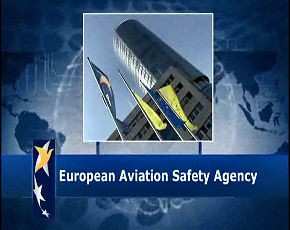Fri, Apr 26, 2013
Agency Puts Forward New And More Accessible Instrument Rating For GA Pilots
The European Aviation Safety Agency has published a proposal to the European Commission containing rules on qualifications for flying in Instrument Meteorological Conditions (IMC). In the document, called an Opinion, the Agency puts forward new and more accessible instrument ratings focused on General Aviation pilots. The proposed changes are expected to increase safety with regard to the accident category of controlled flights into terrain (CFIT) by establishing a better accessible IR. This will enable more European GA pilots to commence this type of training.

The Opinion covers requirements for a competency-based instrument rating (CB IR) and an en-route instrument rating (EIR) for private (PPL(A)) and commercial pilot (CPL(A)) licence holders.
The proposed new ratings will amend the training and checking requirements in the European Commission Regulation (Part-FCL). More specifically, the proposed CB IR course will contain a significantly reduced theoretical knowledge (TK) syllabus appropriately reflected by a different level of TK examinations, and a reduced amount of instrument flight instruction time when compared with the existing IR courses. Meanwhile, the EIR will allow holders of airplane licenses to gain familiarity with instrument flight rules procedures and cope with unforeseen deteriorating weather conditions in the en route phase of flight. Crediting provisions have also been included to support holders of a third-country instrument rating or a national instrument rating in obtaining a European instrument rating.
This Opinion also introduces a cloud flying rating for sailplane pilots. The privilege of this rating will allow a sailplane pilot to enter clouds while taking into account the airspace structure, the required minima in different airspace categories, and the relevant air traffic control (ATC) procedures.
These final requirements are based on extensive consultation of experts from national authorities, flight crew organizations, training schools, and the general aviation community. The Agency’s proposal was initially open for public consultation in 2011 and over 1500 comments were received. This feedback was taken into account and integrated in this Opinion.
More News
Light Gun A handheld directional light signaling device which emits a brilliant narrow beam of white, green, or red light as selected by the tower controller. The color and type of>[...]
"The journey to this achievement started nearly a decade ago when a freshly commissioned Gentry, driven by a fascination with new technologies and a desire to contribute significan>[...]
Aero Linx: JAARS, Inc. For decades now, we’ve landed planes on narrow rivers and towering mountains. We’ve outfitted boats and vehicles to reach villages that rarely se>[...]
"Our driven and innovative team of military and civilian Airmen delivers combat power daily, ensuring our nation is ready today and tomorrow." Source: General Duke Richardson, AFMC>[...]
Aircraft Conflict Predicted conflict, within EDST of two aircraft, or between aircraft and airspace. A Red alert is used for conflicts when the predicted minimum separation is 5 na>[...]
 ANN's Daily Aero-Term (04.20.24): Light Gun
ANN's Daily Aero-Term (04.20.24): Light Gun Aero-News: Quote of the Day (04.20.24)
Aero-News: Quote of the Day (04.20.24) ANN's Daily Aero-Linx (04.21.24)
ANN's Daily Aero-Linx (04.21.24) Aero-News: Quote of the Day (04.21.24)
Aero-News: Quote of the Day (04.21.24) ANN's Daily Aero-Term (04.21.24): Aircraft Conflict
ANN's Daily Aero-Term (04.21.24): Aircraft Conflict



